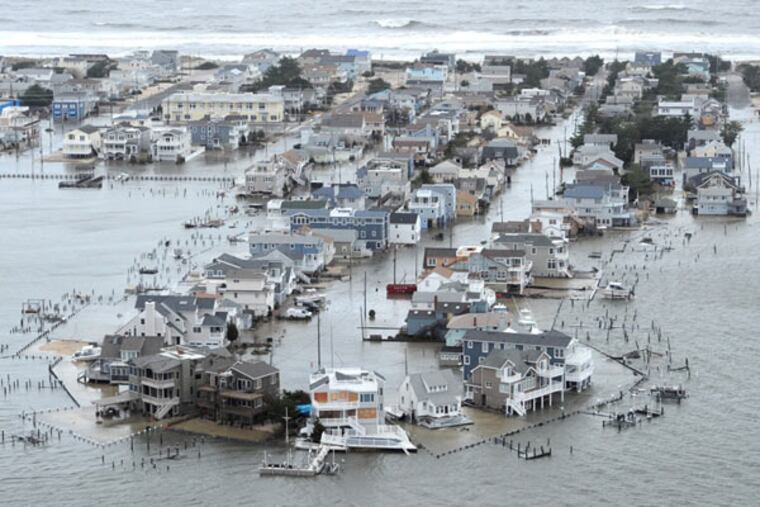New year will bring new pressures to Sandy victims
BRICK, N.J. - Tricia McAvoy is busily preparing for Christmas. She's making a list of whom to invite to a party she's having. She's planning the food and drink menu, mentally checking off what can be cooked indoors and what can go on the grill she still has to replace. And she's envisioning where the tree, lights, and decorations will go.

BRICK, N.J. - Tricia McAvoy is busily preparing for Christmas.
She's making a list of whom to invite to a party she's having. She's planning the food and drink menu, mentally checking off what can be cooked indoors and what can go on the grill she still has to replace. And she's envisioning where the tree, lights, and decorations will go.
The party is set for July at the lagoon-front home she hopes to have back in usable shape by then because, she said, "Christmas this year was just not Christmas." McAvoy and her husband have been living with relatives in Point Pleasant Beach since Hurricane Sandy gutted the first floor of their home, wrecked their four cars, and upended life as they knew it.
"When the clock hits midnight and we can turn the calendar page to Jan. 1 and a new year, I'll be really happy," she said. "It's been a miserable year for everybody. And I'm worried about the future with all these storms."
Ready or not, 2013 is near for the victims of the destructive storm that hit New Jersey in October, destroying or damaging 30,000 homes and businesses. For them, as well as for governments, the new year will be a time of crucial decisions and tight time frames: What needs to get rebuilt first, what can be done without? Will the insurance money come through soon? Will I have to raise my house, and if so, how much higher? Will the beach and boardwalk I loved so much be there by Memorial Day? Will the tourists come back? Will my neighbors?
Towns, counties, and the state and federal governments also have to answer questions quickly, including where to find homes for the thousands of residents displaced by the storm, where to find the money to pay for the staggering recovery cost, and whether some areas might be best left to return to nature instead of rebuilding only to surely see them flooded again by future storms.
"This is going to be a year unlike any other," Seaside Heights Mayor William Akers said.
His first priority is getting residents back home; they will be permitted to return to Seaside Heights starting Jan. 7. Larger businesses and hotels will be allowed back within a month or two. The second goal is getting the boardwalk rebuilt by May 10. That entails only putting new deck boards down; ramps, railings, and other amenities will have to wait until later.
To be sure, a great deal of progress has been made in cleaning up from the storm and at least starting to repair some of the damage. Most of the mountains of garbage and waterlogged debris ripped from flooded or destroyed homes has been carted away. For the most part, sand has been swept from the streets, and emergency repairs made to roads, the most impressive of which was the rebuilding of Route 35 through Mantoloking, which was cut in half by waves that sliced a new channel from the ocean to the bay.
Work is beginning or about to start on boardwalks in Belmar, Ocean Grove, Avon, Asbury Park, Spring Lake, Sea Girt, Point Pleasant Beach, and Seaside Heights. Boardwalk restoration is among Shore towns' top-priority projects. They say the walkways have to be ready by Memorial Day or tourists and their money will go elsewhere, perhaps never to return.
In Seaside Heights, the Jet Star roller coaster that plunged off a collapsing amusement pier into the ocean, perhaps the defining image of the storm, still sits there as its owners and their insurers wrangle over what should be done with it.
Despite the substantial progress made so far, herculean tasks remain. Evacuees occupying motel rooms and apartments have made rentals near the Shore much harder to find. Communities are clamoring for portable trailers from the Federal Emergency Management Agency, but the demand greatly exceeds the supply.